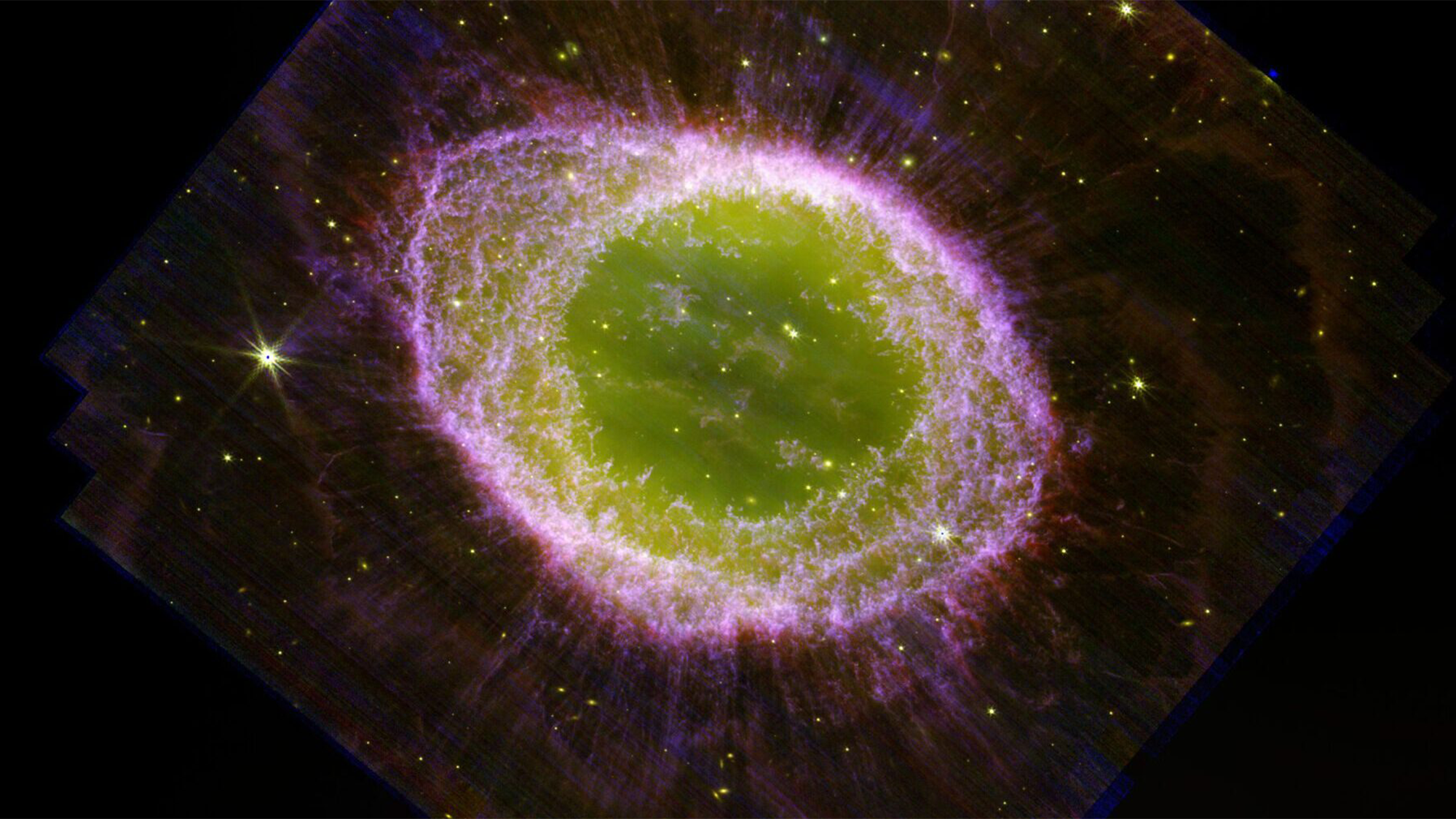

The James Webb Space Telescope (JWST) has just headed into its second year in service, and recently recorded new images of the Ring Nebula named Messier 57. This nebula is about 2,600 light-years away from Earth, located in the Lyra constellation. The images were released by an international team of astronomers who are part of the JWST Ring Nebula Project.
[Related: James Webb Space Telescope reconstructed a ‘star party,’ and you’re invited.]
The Ring Nebula is a common target for space enthusiasts and is known for a donut-shaped ring of dust and gas that can even be viewed with backyard telescopes in the summer months.
“I first saw the Ring Nebula as a kid through just a small telescope,” Western University astrophysicist and member of the JWST Ring Nebula Imaging Project Jan Cami said in a statement. “I would never have thought that one day, I would be part of the team that would use the most powerful space telescope ever built, to look at this object.”
Messier 57 is known as a planetary nebula. These objects are the colorful remnants of dying stars that have tossed a majority of their mass at the end of their stellar lives. Nebulae like the Ring Nebula come in a variety of shapes and patterns, from something that looks like a lobster, to expanding bubbles, to cotton candy-like clouds. The Ring Nebula’s vibrant colors are shown in a whole new light with JWST’s NIRcam.
“We are amazed by the details in the images, better than we have ever seen before. We always knew planetary nebulae were pretty. What we see now is spectacular,” University of Manchester astrophysicist Albert Zijlstra said in a statement.

The patterns in the Ring Nebula are the consequence of a complicated array of different physical properties that astronomers are still figuring out. The light from its hot and central star is illuminating the layers in the pattern. Similar to fireworks, different chemical elements within the Ring Nebula emit specific light colors. The colors help scientists understand the chemical evolution of these objects in better detail.
“These images hold more than just aesthetic appeal; they provide a wealth of scientific insights into the processes of stellar evolution. By studying the Ring Nebula with JWST, we hope to gain a deeper understanding of the life cycles of stars and the elements they release into the cosmos,” member and co-lead scientist of the JWST Ring Nebula Imaging Project Nick Cox said in a statement.
[Related: This highly detailed image of the Cat’s Eye Nebula might finally help us understand how it formed.]
Investigating Messier 57 in this detail can also help astronomers better understand the sun. When stars of similar sizes to our solar system’s central star run out of the fuel needed for nuclear fusion, they can’t support themselves against their own gravity. This ends the balancing forces that kept the star stable for millions to billions of years.
The star’s outer layers are blasted outward as the core collapses, since nuclear fusion is still occurring in these outside layers. The star will initially become a red giant, which is expected to happen to our sun in about five billion years. Eventually, the outer shells will cool and disperse in the variety of shapes nebulae are famous for.
“We are witnessing the final chapters of a star’s life, a preview of the Sun’s distant future so to speak, and JWST’s observations have opened a new window into understanding these awe-inspiring cosmic events,” astronomer and co-lead scientist of the JWST Ring Nebula Imaging Project Mike Barlow from University College London said in a statement. “We can use the Ring Nebula as our laboratory to study how planetary nebulae form and evolve.”
